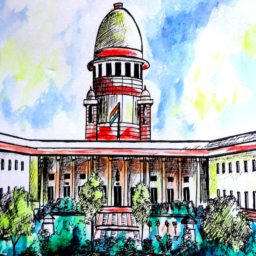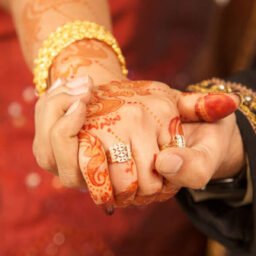The Indian administration is governed by its three major pillars- the executive, the legislative and the judiciary. Judiciary is considered as the watchdog of a democracy. It has also been said that there is no better test of a democracy than the impartiality, independence, and effectiveness of its judicial system. The major functions of the judiciary are to interpret the law, provide justice to everyone and solve disputes between two or more parties.
The Indian Constitution includes certain provisions for union and state judiciary under articles 124-147 and articles 214-231, respectively. The judiciary acts as a safeguard of the constitution when it interprets and protects the provisions of one of the most lengthy and bulky constitution of the world. The integrity, dignity, and prestige of the members of the judiciary comes at stake when they are accused of corruption, malpractice, and nepotism etc. When a Supreme Court or High Court judge is found misbehaving, they can be removed from their position by following the provisions given under the constitution. There is only one ground for such removal, that is, proved misbehavior or incapacity. Currently, Articles 124(4), 124(5) and 218 talk about the removal of the Judges under Indian Constitution.
The Judges may be removed by an order of the President based on the abovementioned grounds. The order of the president can only be passed after it has been addressed to by both houses of parliament in the same session. The address must be supported by each house by a majority of total membership of that house and also by a majority of not less than two-thirds of the members present and voting. The procedure for the presentation of an address and for the investigation and proof of the misbehavior or incapacity of a judge will be determined by the Parliament by law.
The first judge to face the impeachment proceedings in independent India was Justice K. Veeraswami. He was a judge of the Supreme Court. Impeachment proceedings were booked against him in the early 1990s. When he was the Chief justice of the Punjab and Haryana High Court, he was accused of spending profligately on his newly built house. The proceedings of impeachment started against him. According to the procedural norms there should be a majority of two thirds of the members present and voting. This requirement could not be fulfilled by the parliament. So, the impeachment proceedings did not continue, and he managed to hold his position.
In 2011, the Chief Justice of Calcutta High Court was Justice Soumitra Sen. It was alleged that she misappropriated some funds and based on this behavior the parliament began a motion of impeachment against her. All the required formalities and procedures were duly fulfilled. However, before the parliamentary process could be completed, Justice Sen found a better option to save herself from being called as the first judge to be impeached. She addressed her letter of resignation to the President of that time i.e., Pratibha Patil. Thus, she saved herself from being impeached by the parliament as well as all the perks that she would have got after her retirement.
Justice P.D. Dinakaran, the Chief Justice of the Sikkim High Court, belonged to Dalit community. He was held to be involved in corruption practices. He was also found to be misbehaving, based on which it was decided that impeachment proceedings would be carried out against him. Before the proceedings could be initiated, he, much like Justice Sen, resigned from his post and saved himself from the disgrace of being impeached.
Another incident of impeachment of judges took place in 2015, when 58 MPs of the Rajya Sabha moved a petition against Justice J.B. Pardiwala for his removal. Justice Pardiwala was the judge of Gujarat High Court who had made some objectionable remarks regarding reservation while delivering the judgment in Hardik Patel’s Case. The motion proved to be so strong and influencing that he was forced to take his words back from the judgment. Consequently, the impeachment proceedings did not take place against him.
Besides this, Justice C.V. Nagarjuna Reddy is the judge who has faced impeachment proceedings twice. The first attempt was made in December 2016 when a motion was signed by the required majority but some of the MPs withdrew their signatures which cause the proceedings to be quashed. In 2017, a fresh motion was raised for the removal of Justice Reddy. It was also signed by the required majority but as some members of the parliament withdrew their signature, the proceedings could not be carried forward. Thus, Justice Reddy was also saved from the removal process.
Recently in 2018, an impeachment motion was raised against the Chief Justice of India, Justice Deepak Mishra. It was alleged that he did not allocate the cases properly to the judges in the court. Many important cases were allocated to junior judges and four main judges of the court were not considered in this regard. Therefore, it was decided that he should be removed from his position. Seventy-one MPs supported this decision, and a petition was submitted to the Vice President of India, Venkaiah Naidu, who rejected the petition stating that improper allocation of cases is not a ground for removal of a judge as this does not come within the scope of the ground of misbehavior under article 124(4). Therefore, Justice Deepak Mishra continued his tenure as the Chief justice of India.
After more than 70 years of independence, no judge has been impeached in India. The prestige and glory of this profession is significant, but sometimes counterproductive. The Constitution of India is the supreme source of law and safeguard of rights available to the citizens. It is necessary that those who do not discharge their duties according to the provisions of this constitution, face serious consequences. The main objective of adding the provision for the removal of the judges of the courts in the constitution is to make sure that the judges do not misuse the powers of the judiciary. It has been added with a view to prevent misappropriation, corruption, and any other kind of misconduct on the part of the members of the judicial system. Efforts have been made to make judiciary transparent, impartial, and independent, but that does not mean that judges can function arbitrarily in whatever manner it wants.
Author(s) Name: Pooja (Student, Panjab University, Chandigarh)















